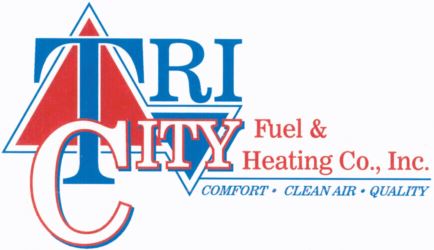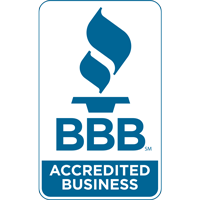
Picking out the ideal furnace filter and changing it when it is dirty is as important to your HVAC system as changing the oil is to your car. Each plays a vital role in keeping its system working safely, efficiently and for a long time.
An overused furnace filter loses its effectiveness, allowing potentially harmful particles to circulate through your home. It also restricts airflow, which can damage your furnace and decrease its life span.
Making certain your furnace uses a clean filter that is ideal for your needs is not just about keeping your furnace operating efficiently. It’s also about delivering excellent indoor air quality for your residence.
The quality of the air your family breathes is important to the heating and cooling professionals at Tri City Fuel & Heating. We've long focused on bettering indoor air quality in West Columbia. Here, we’ve answered frequent questions about HVAC filters, including that particularly tricky question of what direction do you point a filter in your furnace or air conditioner?
When to Replace the Air Filter in Your Furnace
Experts stress it's important to replace dirty air filters in a furnace or air conditioner regularly. Soiled filters cause the system to worker harder than it should because it takes extra effort to force air through the plugged-up filter.
Officials advise inspecting your furnace filter monthly and replacing it if it’s dirty. You’ll know if the filter needs to be changed because it will coated with dirt or dust. Those who have pets that shed will very likely want to replace their furnace air filter more often, because a good air filter will trap pet hair circulating in a home.
How to Find the Furnace's Air Filter
In general, a furnace air filter is normally found in the return air duct or blower compartment before the return air goes back into the furnace. This ensures air flowing into the system is filtered before it passes through the furnace components and is heated.
Depending on the type of furnace, the filter may be located on the right, left, bottom or in some cases, inside the furnace. It's generally housed inside of a slot, frame or cabinet for easy access and replacement. Always refer to your furnace's owner manual for information concerning filter location of your furnace.
Is My Furnace Filter Just a Type of Air Filter?
The easy answer is, yes. In HVAC, a furnace filter and an air filter or air conditioning filter are effectively the same thing. While people might refer to them differently based on the current season— hot or cold—they are all filters that clean the air in your HVAC system.
They each eliminate dust, allergens, bacteria and other particulates from the air that is drawn into the furnace and air conditioning system, ensuring the air flowing through your home is clean and safe.
What Are MERV Ratings and What Rating Is Best for Me?
Once you track down your old furnace filter and decide when it should be replaced, it’s time to pick a replacement. That means determining the level of filtration that you need. One method to do this is by choosing an appropriate MERV rating for your needs.
MERV is an abbreviation for Minimum Efficiency Reporting Values. The MERV rating indicates the effectiveness of air filters at trapping airborne particles. The rating scale ranges from 1 to 20, with higher numbers indicating a greater ability to filter smaller particles.
Experts say a filter with a MERV rating between 8 and 13 offers an ideal balance between having good indoor air quality without unnecessarily restricting airflow. However, people with some health conditions might need to use a filter with a higher MERV rating.
Where to Insert the Air Filter in a Furnace or Air Conditioning System
Positioning an air filter in a furnace or air conditioner properly is necessary for the efficient operation of the system. Air filters are designed to be installed in a particular direction, indicated by an arrow written on the side of the filter frame. The filter should be installed with this arrow pointing in the direction of the furnace or AC, which is the direction of the airflow. If you're not sure about the airflow direction, it may be helpful to remember that air always moves from the return duct towards the heat or cooling source. Therefore, be sure that the arrow points toward the furnace or air conditioning unit.
Many people are confused by which direction to face their system's air filter. To help remember, consider taking a quick picture with your cell phone after the filter has been correctly installed by a professional. Or, you also could ask a technician to use a marker to write on the outside of your furnace which direction the filter should point. A handy time to inquire about this is during a regular furnace maintenance visit.
How to Replace Your Furnace Air Filter
Replacing the filter on your furnace or air conditioner is a simple process. Here is a step-by-step list of how to remove a dirty air filter and exchange it for a new one:
- Turn off your furnace: Make sure to turn off your furnace before starting up the process.
- Find the furnace filter: Typically, the filter is positioned within the furnace or in the air return vent. Make a mental note or write down which direction the arrow points on the filter, because you’ll want the arrow on the replacement filter to point similarly.
- Remove the old filter: Be diligent not to knock out any dust or dirt.
- Record the date: Write down the date you replaced the filter on the new filter's frame. This will make it easier to keep track of when it's time for the next change.
- Put in new filter: Put in the new filter with the arrow pointing toward the furnace, which is the direction of airflow and should be the same direction the arrow pointed on the old filter you are replacing.
- Secure the filter: Make sure the new filter fits securely and close any latches or clips that lock it in place.
- Turn on your furnace: Once the replacement filter is safely installed, you can turn your furnace back on.
Will a Dirty Air Filter Cause a Furnace Not to Work?
The short answer is, yes, a dirty air filter can cause a furnace to cease working or reduce its lifespan. Changing your furnace or air conditioner filter is one of the easiest things you can do to keep your system running effectively.


